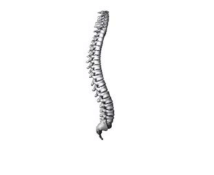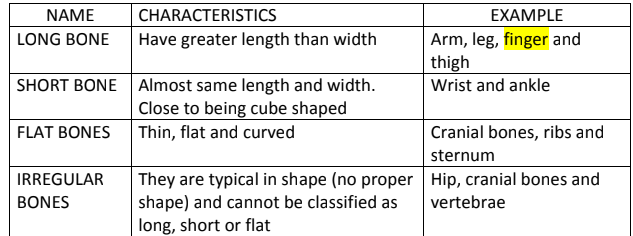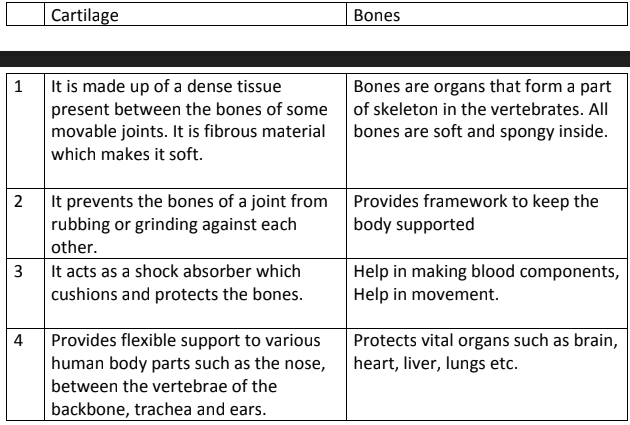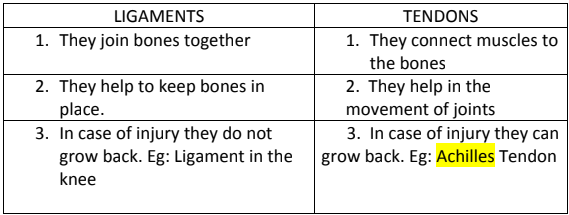Hi Everyone!! This article will share Skeletal System Questions & Answers.
In my previous post, I have shared the objective type questions and answers of Skeletal System so, make sure to check this post as well.
Skeletal System Questions & Answers
Question 1: What is a skeletal system? State its functions.
Answer: A system in which framework of bones provides structure and support for a body is a skeletal system.
Functions of the Skeletal System are:
- Gives basic shape and structure to the body.
- Protects internal organs.
- Enable us to perform various bodily functions.
- Blood cells are produced within the red bone marrow present in some bones.
- Minerals such as calcium and phosphorous are stored in some bones.
Question 2: Define:
(a) Joint
Answer: A joint is where two or more bones meet. It enables the movement of bones and provides support to the body.
(b) Skeleton
Answer: The skeletal system is made of bones and is called the skeleton.
Question 3: Give reasons:
(a) Regular exercise keeps bones and muscles strong.
Answer: Bones and muscles becomes strong when muscles push against bones during physical activity. Thus, regular exercise keeps muscles and bones strong.
(b) The skeleton of a child has more bones than the skeleton of an adult.
Answer: The skeleton of a child has 270 bone and as the child grows some bones fuses together to form larger bone and therefore an adult has 206 bones.
(c) Muscles and bones are different but are closely linked.
Answer: Muscles are softer than bones. But some muscles are attached closely to the bones which are also known as skeletal muscles. These muscles help in proper functioning of the bone. The muscles and the skeletal system together form the musculoskeletal system of the body.
(d) The bones of the skull are immovable except lower jaw.
Answer: All the other bones in the skull are firmly attached to one another by sutures. Sutures are rigid immovable connections holding bones tightly to one another forming cranium that protects the brain and facial bones. Lower jaw is the only movable joint as it forms the lower part of mouth whose function is also to chew food.
(e) Babies are advised to drink milk, eat cheese and spinach.
Answer: Milk cheese and spinach contain nutrients such as proteins, fats, vitamins and minerals in a large amount, which help in the growth and development of bones. These nutrients also help to make bones stronger.
Skeletal System Questions & Answers
Question 4: Observe the given picture and answer the questions:

(a) Identify the structure shown above.
Answer: Backbone / vertebral column/spine.
(b) How many bones are present in the above structure?
Answer: 33 bones are present.
(c) Which organ does the above structure protect?
Answer: Spinal cord
Question 5: Differentiate between Pelvic girdle and Pectoral girdle.
Answer:
| Pelvic Girdle | Pectoral Girdle |
| i. Located in the hip region. | i. Located in the shoulder region. |
| ii. It attaches the lower limbs to the remaining parts of the body skeleton. | ii. It attaches the upper limbs to the remaining parts of the body skeleton. |
Question 6: Give one example of the following:
(a) A movable joint
Answer: Knee joint/ shoulder joint/ elbow joint
(b) Immovable joints
Answer: Joints of the skull
Question 7: How are bones classified on the basis of shape and size?
Answer: Based on shape and size, bones are classified into four types:

Skeletal System Questions & Answers
Question 8: Name the parts of skeleton and its functions.
Answer: Our skeleton is made up of five main parts:
1. The skull
- It is made up of 22 bones.
- Only the lower jaw is immovable.
- Protects the brain enclosed within.
2. Ribcage
- Thin flat and curved bones in the chest region forming a cage.
- It is made up of 12 pairs of bones called ribs.
- First 10 pairs of ribs are attached to a long bone called sternum or breastbone in front and to the backbone behind.
- Last two pairs of ribs are only attached to the backbone behind and are called floating ribs.
- It protects internal organs such as heart and lungs from injuries and shock.
3. Backbone or vertebral column
- The backbone is made up of 33 vertebrae.
- It protects the spinal cord
- Helps us to stand upright and maintain our balance.
4. Limbs
Humans have –
i. Forelimbs (upperlimbs or arms): Humerus is a long bone present in the upper arm.
ii. Hind limbs (lower limbs or legs): Femur present in the thigh is the longest bone in the human body.
Limbs enable us to perform various activities such as running, walking, swimming, jumping, drawing, writing etc.
5. Girdles
The skeleton has two girdles –
i. Pectoral girdle or the shoulder girdle is formed by the joining of bones in the shoulder region. It attaches the upper limb to the remaining parts of the body skeleton.
ii. Pelvic girdle is formed by joining of the bones in hip region. It attaches the lower limbs to the remaining parts of the body skeleton.
Question 9: Differentiate between cartilage and bones.
Answer:

Question 10: Differentiate between Ligaments and Tendons?
Answer:

So, these were Skeletal System Questions & Answers.